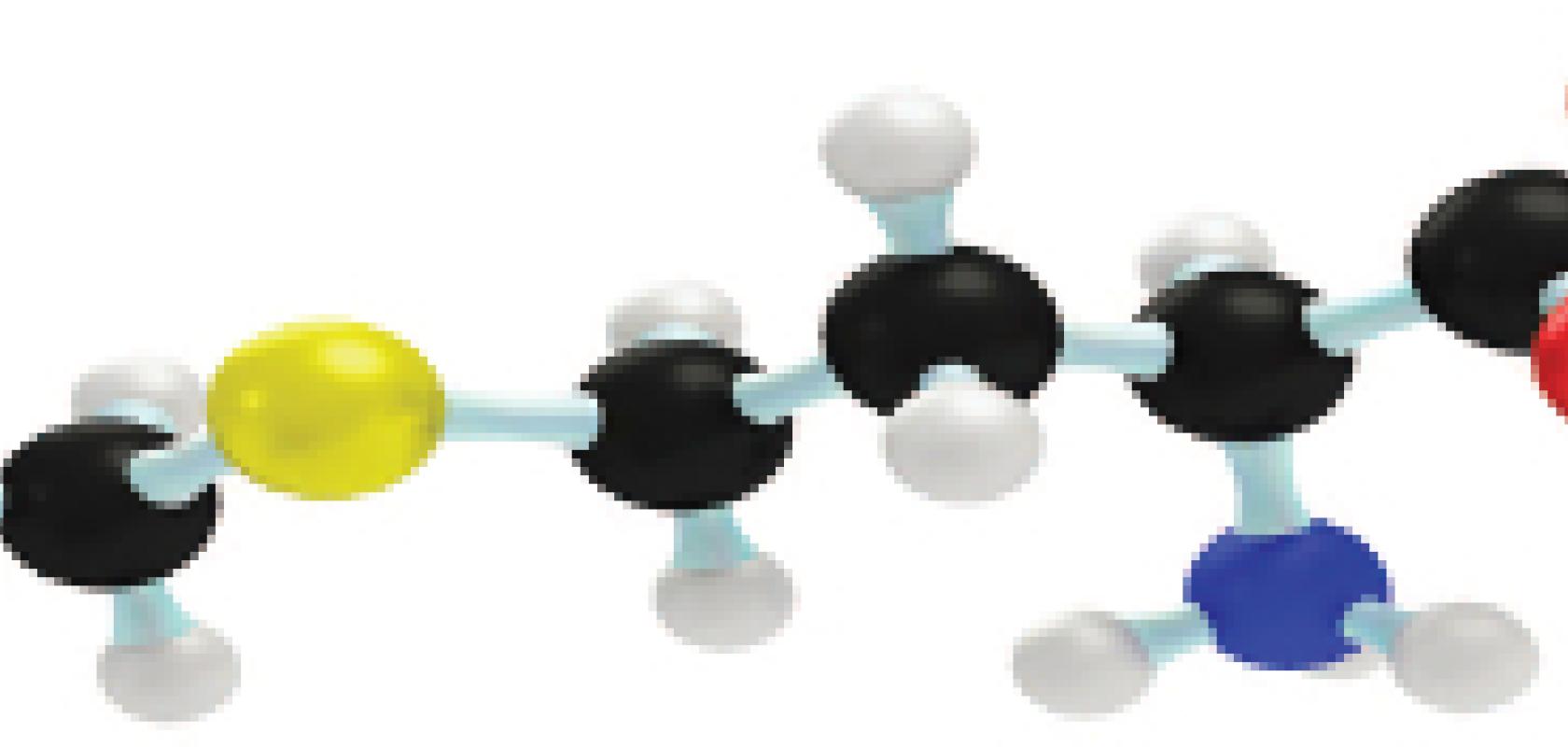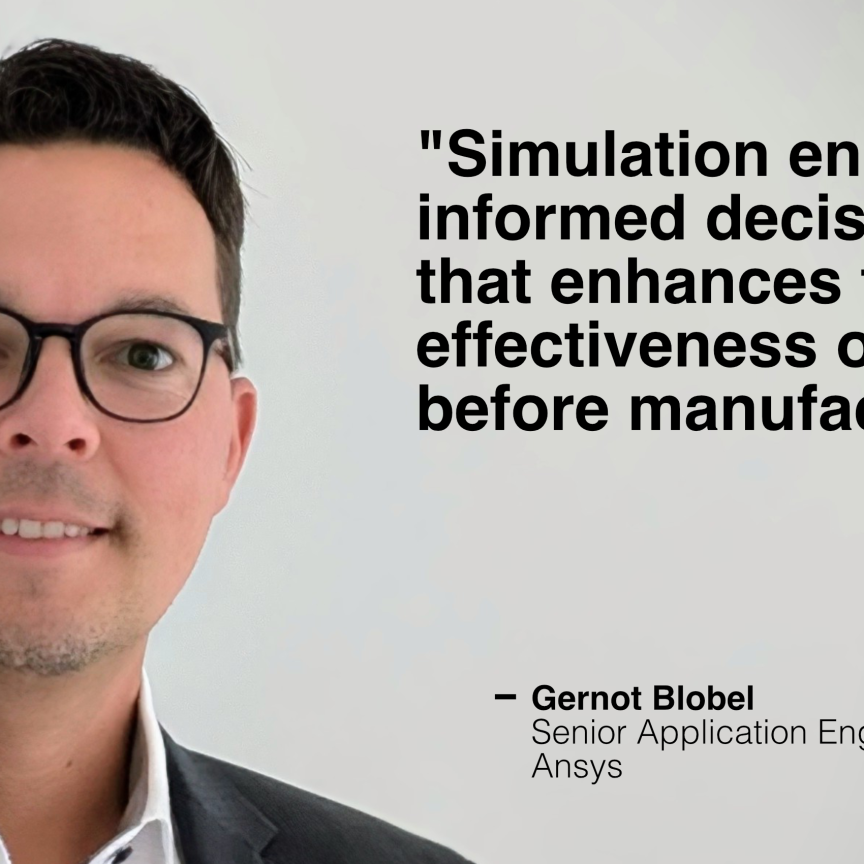The properties of light are defined by many factors – but polarisation, or the orientation at which the light waves oscillate, almost adds a secret dimension to the information encoded in light rays (secret because we humans can’t perceive it). ‘There’s this hidden layer of information in the world around us,’ explains Paul Searcy, VP of technical operations at polariser manufacturer Meadowlark Optics, ‘either present in a chemical analysis or a rubidium atom reacting in a magnetic field. Only now are scientists really being able to analyse and commercialise this additional layer of information.’
In chemistry, different isomers of a chemical compound will behave differently in terms of their polarisation state. Certain chiral molecules will have both left- and right-handed isomers; that is, they will have the same molecular formula but different structural formulas. As such, although they are made up of the same number of atoms, their activity will be affected by how they are orientated. Their structure can be determined by their polarisation state, with a left-handed isomer of a molecule polarising the light differently to its right-handed version, for example.
The thalidomide scandal in the late 1950s was due to a chiral error in the compound. Thalidomide was offered as a drug to ease morning sickness in pregnant women, but the wrong chirality meant the drug interacted with the embryo’s prenatal DNA, causing birth defects.
The thalidomide scandal is an extreme case, but chirality in pharmacology is important; often, only one isomer of a chemical compound will be effective. ‘Chemical companies producing large quantities of a compound might use an in-line polarisation detection system to monitor chirality as the chemicals are synthesised,’ explains Searcy.
Meadowlark Optics, based in Frederick, Colorado, US, manufactures polarisation solutions, including its OWL (Outrageously Wide Lambda) polariser, a broadband polariser operating from 300 to 2,700nm. Meadowlark Optics’ polarisers are available in the UK from Laser Physics.
‘The OWL polariser doesn’t cover the entire range for organic chemical analysis points – there are certain chemical bonds that absorb at 20µm,’ says Searcy. Meadowlark provides polarisers that go out that far into the infrared, but they are fabricated on a silicon substrate and don’t transfer light in the visible or near-infrared spectrum. Chemists might have the need to measure behaviour in the visible spectrum and the far infrared simultaneously, according to Searcy.
The OWL polariser has extremely good contrast in the visible spectrum, says Searcy, which makes it powerful in terms of its polarisation purity. ‘If you’re looking for trace levels of contaminants of the wrong chirality, then you need to have high sensitivity. If the sensitivity is washed out by leakage in the polariser, you won’t be able to detect those contaminants.’
The disadvantage with a polariser is that it absorbs half the incoming light, transmitting only that which is in a specific polarisation state. There are ways of getting round this, such as with a polariser beam splitter cube. Here, the reflected beam can be used to carry out a complementary analysis, which is how Meadowlark’s non-mechanical polarimeter operates – it has a beam splitter cube that optimises the signal by using the reflected light.
Chemists tend to work in the 2 to 5µm range. According to Trey Turner, chief technology officer at optics provider REO, polarising beam splitters have traditionally been difficult to fabricate in the MWIR, especially for high-efficiency, high extinction polarisation with broad bandwidth.
‘The main limitation in the MWIR range is the availability of adhesives. Most optical adhesives do not transmit throughout the MWIR wavelength range,’ Turner says. REO uses its Activated Covalent Bonding (ACB) technology to join these polarisers without the use of adhesives. The polarising beam splitter cubes are made of silicon, coated with thin-film materials, and joined at the hypotenuse using the ACB bonding technology without adhesives. ‘Just with the silicon and a dielectric coating, we’re able to make a high-extinction, broad bandwidth polariser,’ adds Turner.
‘For many applications, it’s highly desirable to capture all the light,’ notes Turner, which is the advantage of using a polarising beam splitter. ‘For instance, in certain types of chemical analysis the properties of a material may be encoded in the polarisation state of the light returning from the sample.’
Turner says that most of the demand for REO’s infrared polarisers is as a component of high-performance laser isolators. Some of those lasers, such as quantum cascade lasers, are important for chemical sensing and spectroscopy-type applications in the mid-infrared. ‘It’s been a real challenge to find appropriate isolator technology for quantum cascade lasers in the infrared wavelength range, which is one area that’s driving demand for the MWIR polarisers REO produces,’ he states.
A laser isolator is a component analogous to an electrical diode, in that it allows light to pass in one direction but not in the other. Many types of laser including quantum cascade lasers and fibre lasers are susceptible to back reflection from the optical system, which can cause noise in the laser beam. An isolator eliminates back reflections by filtering out light reflected back into the exit aperture of the laser. In its simplest form, it is made from a polariser and a quarter waveplate. With the ACB technology, REO can manufacture MWIR polarisers for these isolators.
Polarimetric camera
Advances in nanolithography mean pattered versions of polarisers can now be made. This technology can be used to make a polarimetric camera by layering a polarised lenslet array on top of a CCD array. Meadowlark has produced a polarised beam splitter for a camera designed by aerospace and defence company Lockheed Martin. The incoming light is split into four different polarisation states, which the camera captures simultaneously on a CCD array. An algorithm then uses the four images to generate one that shows a view of a particular polarisation state.
‘The camera can capture a single image with polarisation-specific information from the scene,’ explains Searcy at Meadowlark. This eliminates many of the problems with a time-domain polarimeter, whereby consecutive images are taken at different polarisation states and whereby artefacts caused by the object moving between shots can mask the signal.
Lockheed Martin has tested the camera in the field in aerial surveillance and in applications on the ground. ‘In one demonstration, we hid a plywood board behind foliage. We could make out the board even though it’s behind camouflage,’ remarks Searcy. The polarimetric camera could pick out the board at 75m distance and Lockheed Martin hypothesises that the camera could potentially be used to detect military vehicles hidden by vegetation.
The camera was also able to detect freshly laid concrete in aerial surveillance of an urban scene, the idea being that fresh asphalt in a hostile country could be used to conceal improvised explosive devices. It also successfully imaged the plume of a K-model rocket in test burns lasting 2.5 seconds at a distance of 2.5km. Since the camera captures four different polarisation channels simultaneously, it was able to detect the plume over the short timescale, which would have been more difficult with a time-domain polarimeter.
This is an excellent example of how a polariser can reveal objects that would otherwise go unnoticed. Just as imaging at different wavelengths will highlight different features in a scene, examining what is encoded in the polarised world adds another layer of information that can be tapped into.
 Greg Blackman is the editor for Electro Optics, Imaging & Machine Vision Europe, and Laser Systems Europe.
Greg Blackman is the editor for Electro Optics, Imaging & Machine Vision Europe, and Laser Systems Europe.
You can contact him at greg.blackman@europascience.com or on +44 (0) 1223 275 472.
Find us on Twitter at @ElectroOptics, @IMVEurope, and @LaserSystemsMag.


